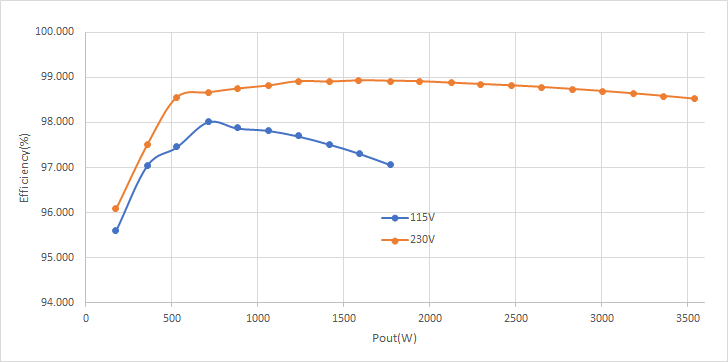TIDT369B November 2023 – July 2024
4.4.1 Efficiency Graph
Conditions
- Switching Frequency: 65kHz
- GaN Slew Rate: 100V/ns
- Output: 385V
- Power analyzer: WT5000
- Relay and BB bypass FETs shorted
- Auxiliary supply not included
 Figure 4-7 Efficiency Graph
Figure 4-7 Efficiency GraphTIDT369B November 2023 – July 2024
Conditions
 Figure 4-7 Efficiency Graph
Figure 4-7 Efficiency Graph